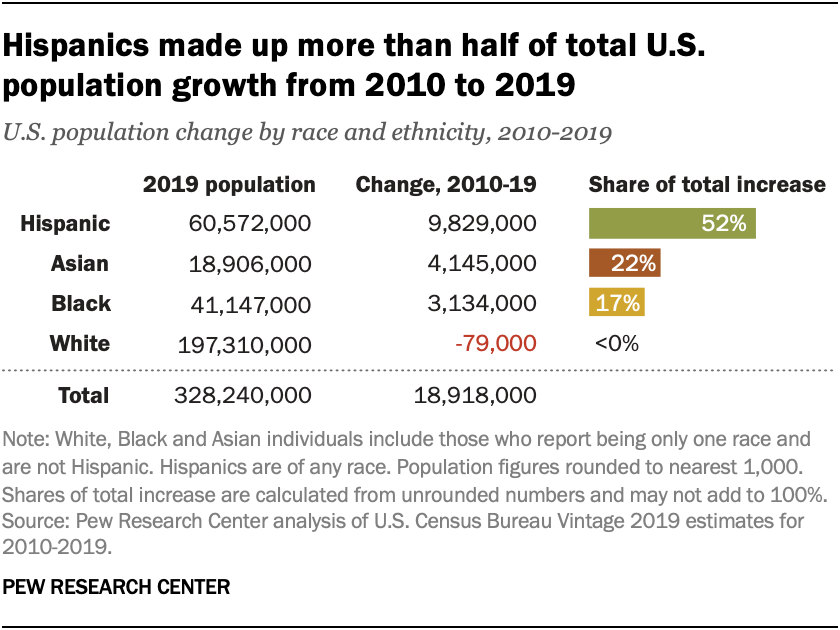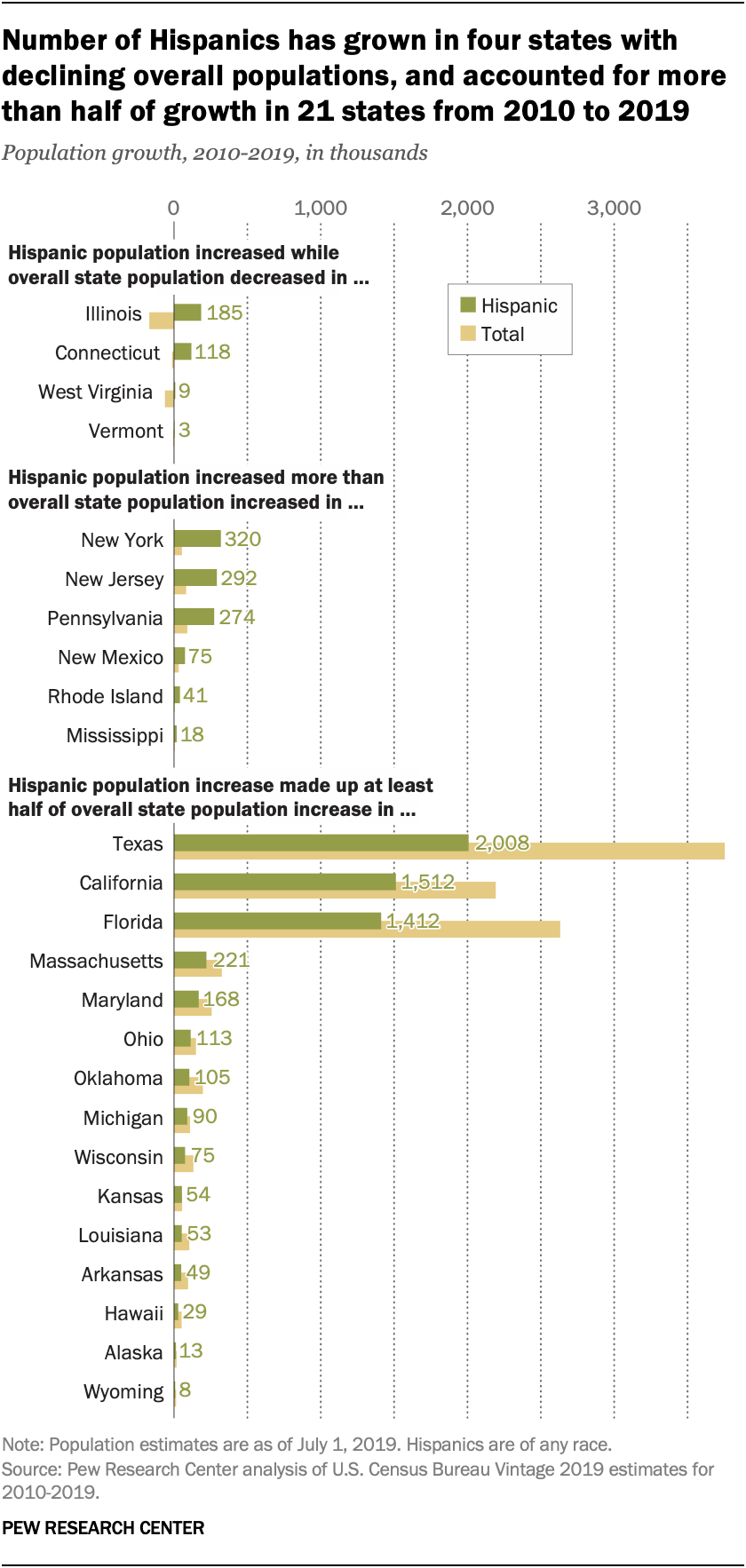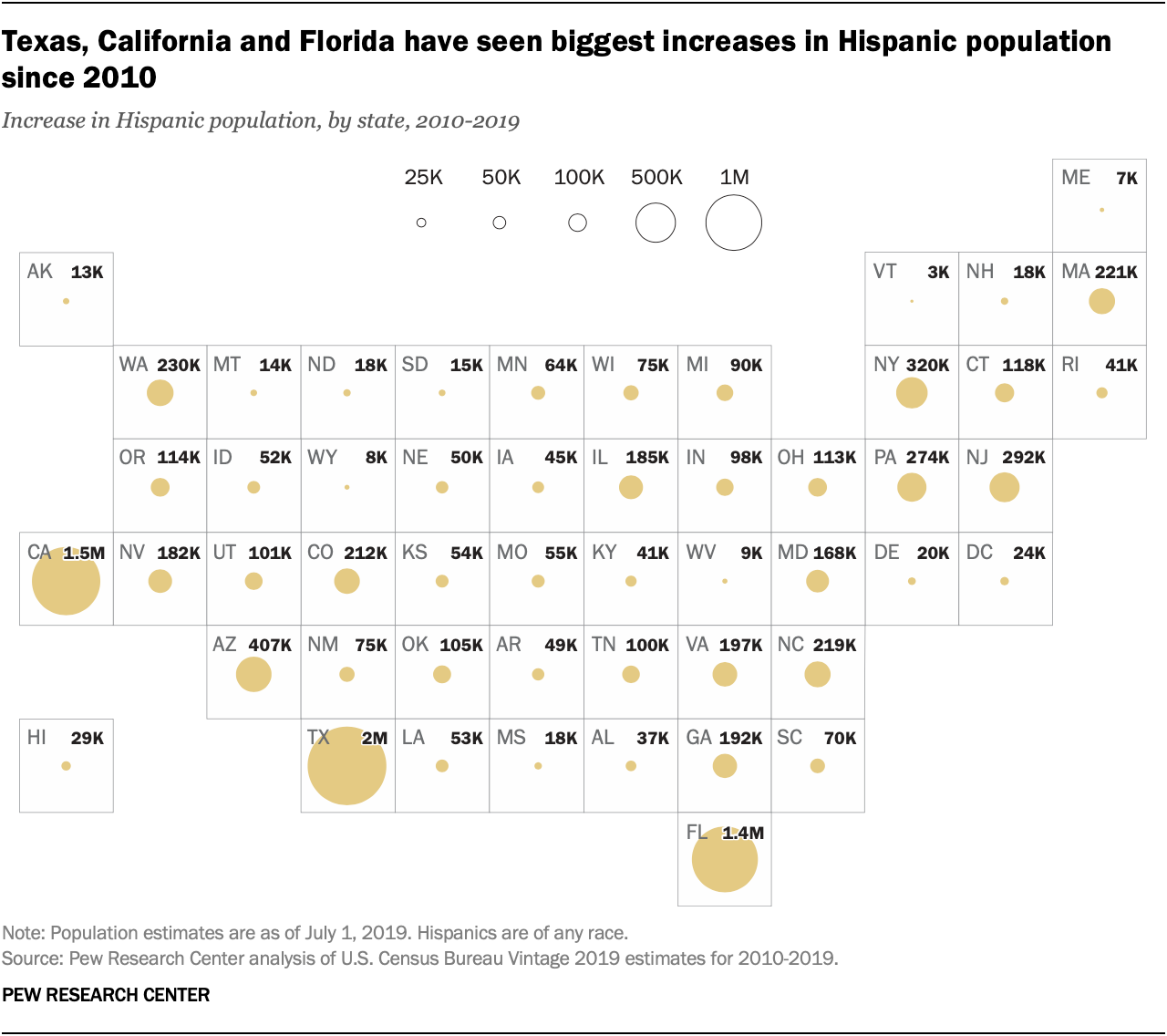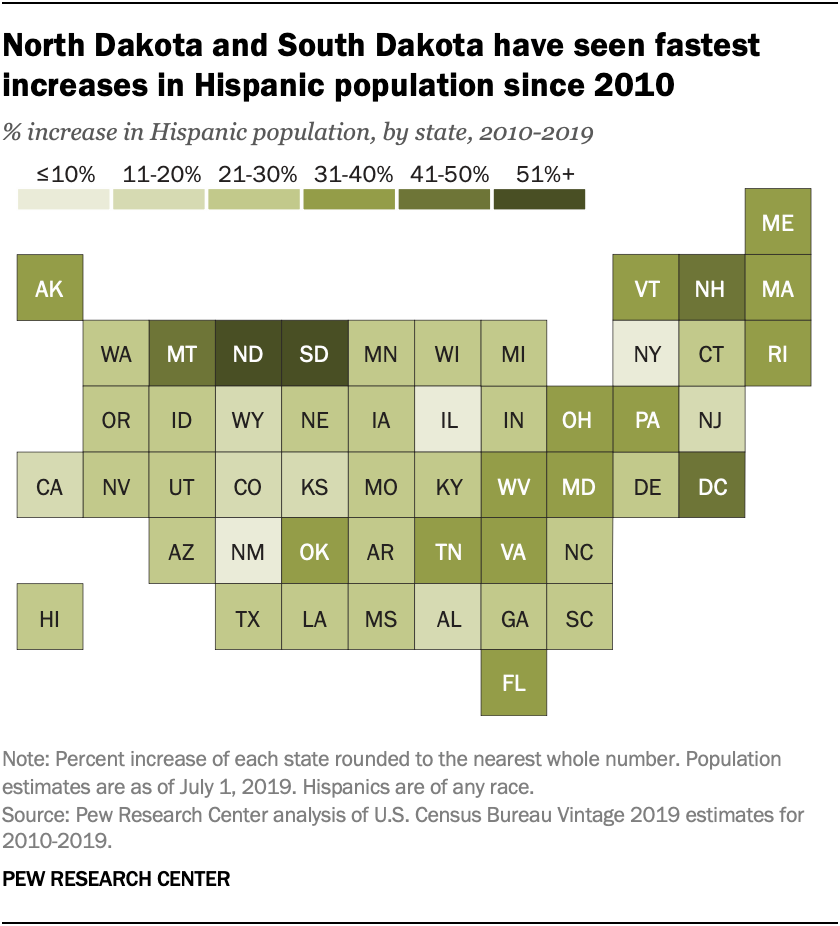

Members of the Latino community attend a Spanish language Easter Sunday service at the Cathedral of Our Lady of Angels in Los Angeles, California, on April 1, 2018. (MARK RALSTON/AFP via Getty Images)
A new post published last Friday by Pew Research provides the latest insights into the growth of the Latinos in the United States, citing that U.S. Latinos accounted for 52% of U.S. population growth from 2010 to 2019.
According to Pew, the U.S. saw a population increase of 18.9 million people. Those who identified as Latino were 9,829,000 people of that total number. Asian Americans accounted for 22% of U.S. population, with Black Americans representing at 17% growth. White Americans saw no growth, with a population decrease of 79,000.


These latest population numbers analyzed by Pew were based by the latest U.S. Census Bureau population estimates. These estimates are considered the official numbers until the 2020 Census is completed.
“In 2019, the number of Hispanics reached a record 60.6 million, making up 18% of the U.S. population. This is up from 50.7 million in 2010, when Hispanics were 16% of the population,” Pew noted. “The number of Hispanics is growing more slowly than it previously did, due to a decline in the annual number of births to Hispanic women and a drop in immigration, particularly from Mexico. From 2015 to 2019, the Hispanic population grew by an average of 1.9% per year, down significantly from a peak of 4.8% from 1995 to 2000.”
The median age of U.S. Latinos, according to Pew, is 30 years old.
Pew also shared where the Latino population grew across states. Illinois, Connecticut, West Virginia and Vermont all saw overall population decreases, but still saw increases in the Latino population. Six states (New York, New Jersey, Pennsylvania, New Mexico, Rhode Island, and Mississippi) all experienced overall population growth. with the rates of their respective Latino populations all outpacing overall population growth rates. Finally, Pew noted that 21 states saw their Latino population growth account for more than half each state’s overall population growth.


Not surprisingly, Pew’s analysis confirm that the three states with the biggest increases in the Latino population were Texas, California and Florida. California (15.6 million) and Texas (11.5 million) alone account for 45% of the nation’s Latino population, Pew noted.


As for states with the fastest rate of growth with Latinos from 2010-2019, that honor goes to North Dakota (129% increase) and South Dakota (up 66% to 37,400). Two other states that have seen the fastest increase include Montana (up 50% to 43,300) and New Hampshire (up 48% to 54,600). The District of Columbia saw a 42% increase for a total Latino population of 79,500.


You can access the Pew post here, which includes a detailed state-by-state breakdown. The current data does not take into consideration demographic changes due to the COVID-19 pandemic, a topic that is just beginning to gain more and more attention, since Latinos have been identified as the group most disproportionately impacted.



[…] accounted for half of the country’s population growth over the past decade. The number of Latinos in the U.S. has grown so much that it’s hard to say if representation is […]
[…] accounted for half of the country’s population growth over the past decade. The number of Latinos in the U.S. has grown so much that it’s hard to say if representation is […]